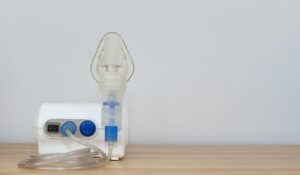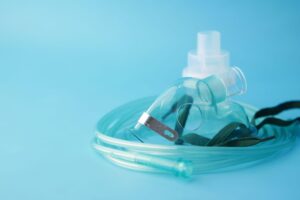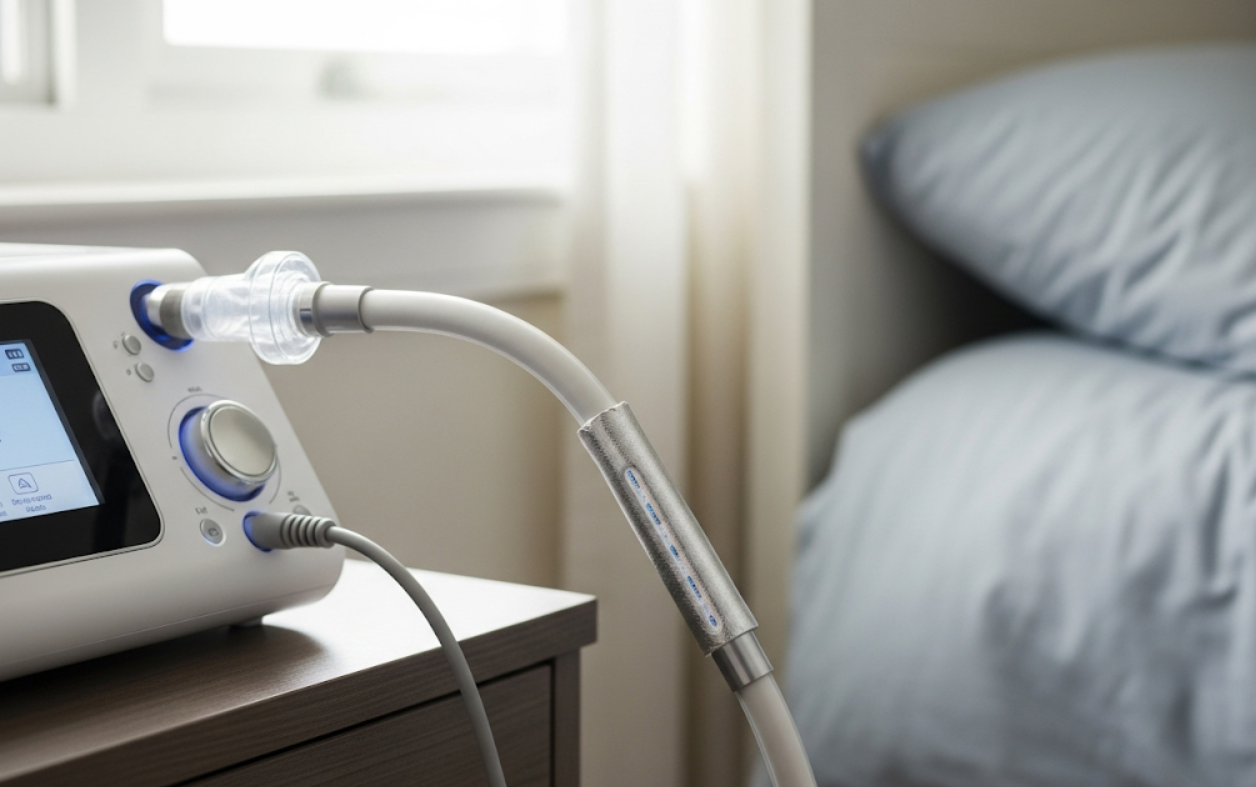
When it comes to improving sleep quality and managing sleep apnea, CPAP tubing and filters play a crucial role. These components ensure your CPAP machine delivers clean and consistent airflow throughout the night. At MacPherson’s Medical Supply, we understand how important it is to maintain your equipment for optimal performance and comfort.
Choosing the right CPAP tubing and filters can transform your sleep therapy experience. This investment in quality components helps you achieve the restorative sleep you deserve. Clean filters protect your airways by blocking dust and allergens, while properly maintained tubing ensures steady, comfortable airflow throughout the night. These essential parts create the foundation for better breathing and more refreshing sleep, setting you up for energized, productive days.
We’re here to help you find the best CPAP tubing and filters tailored to your needs so you can breathe easier and live better. Let’s explore how proper maintenance of these essential parts can enhance your sleep therapy journey.
A Closer Look at CPAP Tubing and Filters for Better Sleep
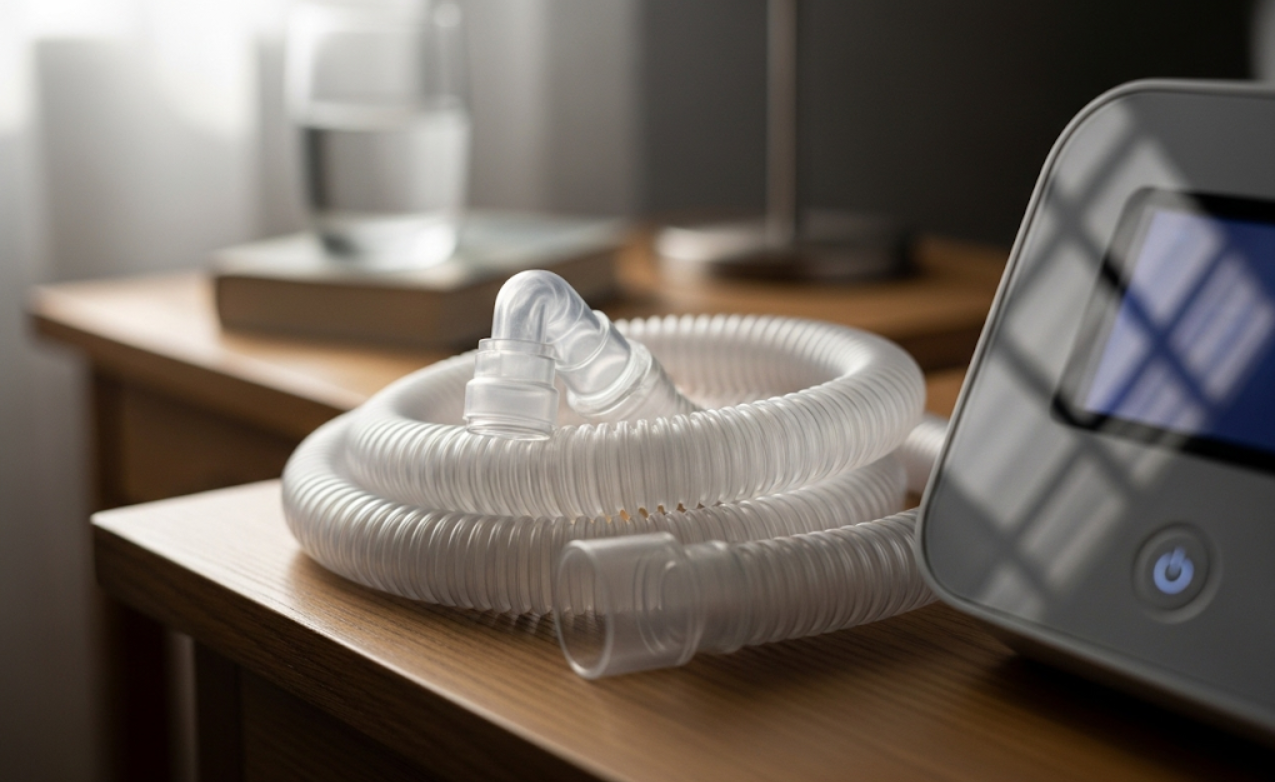
CPAP tubing and filters play crucial roles in ensuring effective and comfortable sleep therapy. Proper maintenance and selection of these durable medical equipment components enhance your treatment with CPAP machines.
What Is CPAP Tubing?
CPAP tubing connects your CPAP machine to the mask, delivering a continuous flow of pressurized air. The tubing must maintain airtight integrity to prevent leaks and ensure steady airflow. Tubing length and diameter impact comfort and mobility during sleep. Medical supply experts recommend selecting tubing that suits both your CPAP machine and personal comfort needs.
Types of CPAP Tubing
Standard CPAP tubing consists of lightweight, flexible plastic or silicone. Heated tubing, which includes an internal heating element, reduces condensation buildup, preventing “rainout” during therapy. Extended-length tubing offers added freedom of movement and is ideal if your device sits at a distance. Each type supports effective therapy but varies in comfort, weight, and maintenance requirements.
Role of CPAP Filters in Therapy
CPAP filters protect your airway by filtering dust, pollen, and other airborne particles from the air entering your machine. Clean filters prevent irritants and allergens from entering the lungs, supporting respiratory health. Disposable filters require regular replacement, while reusable filters need consistent cleaning. Respiratory therapists stress timely filter maintenance to maintain optimal airflow and reduce respiratory issues associated with unclean equipment.
For assistance selecting or maintaining CPAP tubing and filters, contact our team of respiratory therapists at MacPherson’s Medical Supply, your trusted source for durable medical equipment in the Rio Grande Valley. Visit our local store or call today to optimize your sleep therapy experience.
Choosing the Right CPAP Tubing
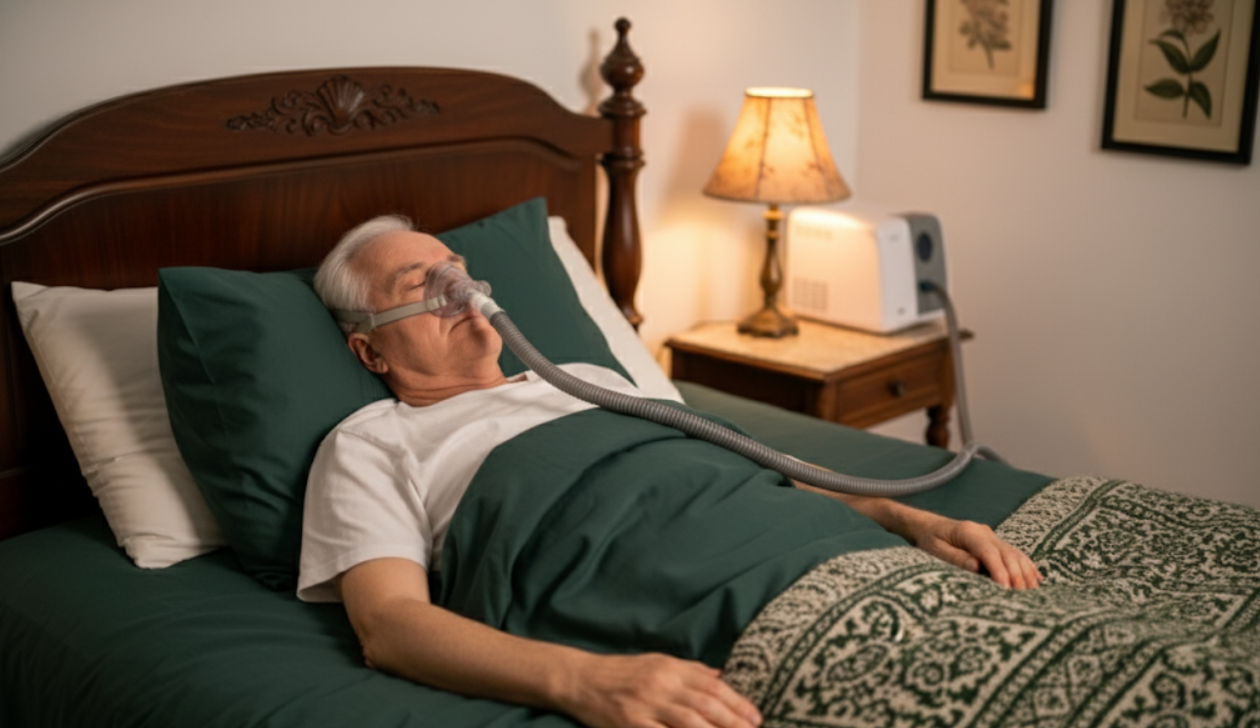
Selecting the correct CPAP tubing improves comfort and therapy effectiveness. Understanding tubing options helps you get the most from your CPAP machine.
Length and Diameter Considerations
Choosing tubing length depends on your sleeping habits and bed setup. Standard lengths range from 6 to 10 feet; longer tubes allow more movement but may slightly reduce pressure. Diameter typically stays consistent to maintain airtight airflow. Opt for tubing that fits your mask and machine to avoid leaks. In the Rio Grande Valley, our medical supply store offers various sizes to suit your needs.
Heated vs. Standard Tubing
Heated tubing helps prevent condensation buildup and keeps air warm, reducing discomfort from cold air. Standard tubing provides a simple, durable option but may cause dry or irritated airways for some users. Our respiratory therapist can help decide if heated tubing matches your therapy requirements and local climate conditions, enhancing your CPAP experience.
Maintenance and Replacement Tips
Regular cleaning prevents bacterial growth and extends tubing life. Replace tubing every 3 to 6 months, or sooner if you notice cracks or discoloration. Use mild soap and water for cleaning and allow tubing to dry completely. Our family-owned medical supply company in South Texas stocks quality replacement tubing and can guide you to maintain your durable medical equipment effectively.
Breathe Cleaner Air with Advanced Filter Options
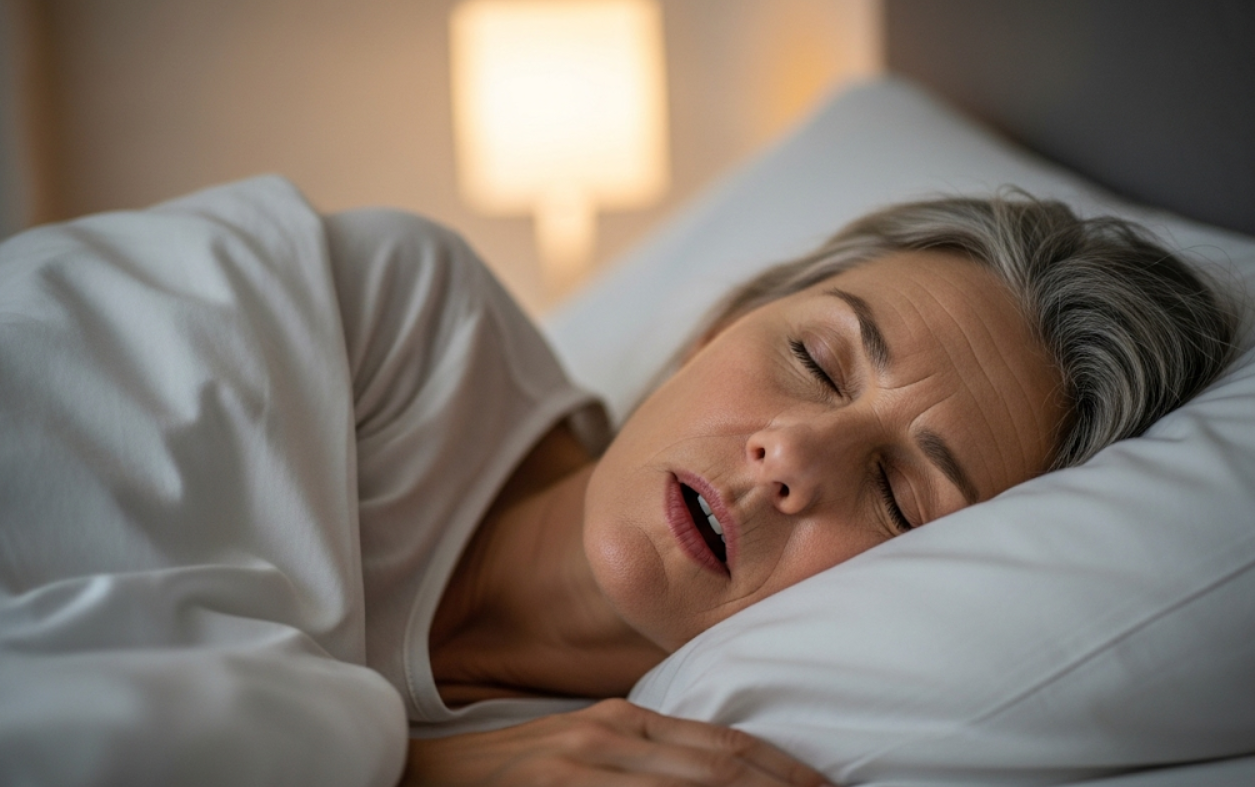
CPAP filters play a vital role in maintaining clean air for your respiratory therapy. These filters keep debris and irritants out of your airway, ensuring your CPAP machine delivers safe and effective airflow.
Disposable Filters
Disposable filters capture dust, pollen, and small particles to protect the CPAP machine and your airway. We recommend replacing these filters every 2 to 4 weeks depending on usage and environment. Disposable filters provide effective filtration for everyday use and prevent debris buildup in the machine, maintaining optimal airflow performance. They offer a convenient, hygienic solution for users who need regular filter changes without the hassle of cleaning.
Reusable Filters
Reusable CPAP filters provide durable filtration that you can clean and reuse multiple times. Designed from washable materials, these filters help reduce replacement costs and waste. Cleaning should occur weekly with mild soap and water, allowing complete drying before reinserting. Reusable filters work well in environments with moderate dust and allergens, delivering consistent protection while extending filter lifespan.
Specialized Filters for Allergens and Dust
Specialized allergy and dust filters enhance protection for users in high-pollen or dusty areas. These filters capture finer particles such as mold spores, pet dander, and other allergens that standard filters may miss. Ideal for sensitive users and those living in the Rio Grande Valley and other regions with seasonal allergens, these filters support cleaner breathing and reduce potential irritants. Our respiratory therapist can help identify the best filter type for your specific needs.
If you need assistance selecting CPAP filters or tubing, call us or visit our local store. We offer durable medical equipment and personalized respiratory care right here in the Rio Grande Valley.
Learn more about our full range of services and browse our CPAP machines and supplies.
How to Clean and Replace CPAP Filters and Tubing
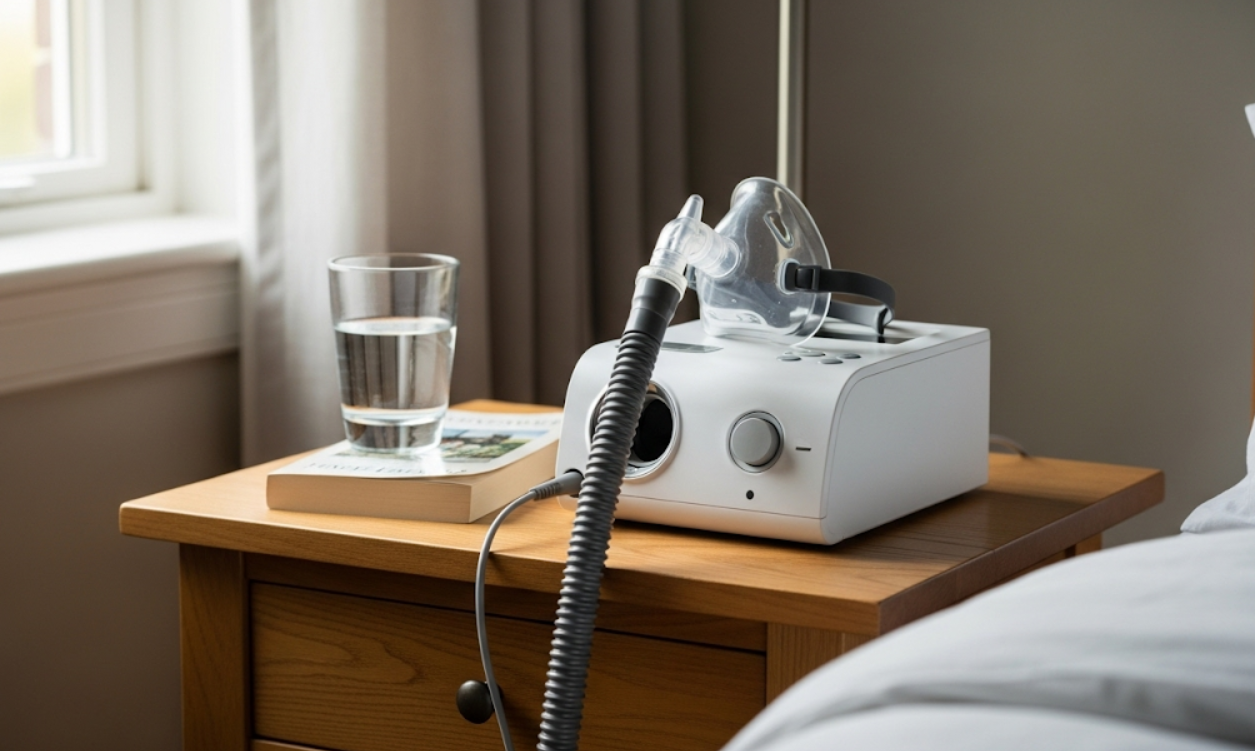
Proper care of your CPAP tubing and filters improves sleep therapy effectiveness and protects your respiratory health. We provide clear guidance on cleaning and replacement to keep your equipment in top condition.
Cleaning Best Practices
Clean your CPAP tubing and filters regularly to prevent bacterial buildup and maintain optimal airflow. Rinse tubing daily with warm water and a mild, fragrance-free soap after disconnecting it from the machine. Hang it to air dry completely before reconnecting. Wash reusable filters weekly using the same gentle soap, then rinse thoroughly and let dry. Avoid harsh chemicals or bleach, which can damage your durable medical equipment. Regular cleaning supports respiratory therapy and ensures reliable performance of your CPAP machines. For more detailed care tips and expert advice, check out our blog where we share insights on maintaining your respiratory equipment.
Signs It’s Time to Replace Tubing and Filters
Replace CPAP tubing every 3 to 6 months or sooner if you notice cracks, discoloration, or unpleasant odors. Disposable filters require replacement every 2 to 4 weeks to prevent clogging and maintain clear airflow. Reusable filters should be replaced every 3 months or if they show signs of wear. Damage or buildup can reduce the efficiency of your machine and impact sleep quality. Staying on top of replacement safeguards your respiratory health and keeps your CPAP therapy running smoothly.
For personalized assistance, contact our respiratory therapists or visit our medical supply store, your local source for durable medical equipment in the Rio Grande Valley. Learn about our company’s commitment to providing quality respiratory care and medical supplies to our community.
Impact of Quality Tubing and Filters on CPAP Therapy
Quality tubing and filters directly affect the effectiveness of CPAP therapy. Maintaining clean, well-fitting components optimizes airflow and comfort, essential for consistent treatment and respiratory health.
Improving Airflow and Comfort
High-quality CPAP tubing ensures airtight connections that prevent leaks and pressure drops. Heated tubing offers added comfort by reducing condensation and maintaining warm airflow. Selecting the right tubing length and diameter supports better mobility without compromising performance. Clean filters remove dust and allergens, allowing smooth, uncontaminated air delivery. These factors work together to reduce dryness and irritation, enhancing your experience with CPAP machines and promoting better sleep.
Preventing Contamination and Infections
Filters play a crucial role in keeping airborne contaminants out of your airways. Regularly replaced disposable filters and cleaned reusable filters minimize exposure to dust, pollen, and bacteria. Proper care of tubing, including daily rinsing and periodic replacement, prevents bacterial buildup and mold growth.
These steps reduce infection risks and ensure your durable medical equipment functions safely. Our respiratory therapist in the Rio Grande Valley can help you select and maintain the right CPAP supplies to protect your respiratory health and elevate your therapy.
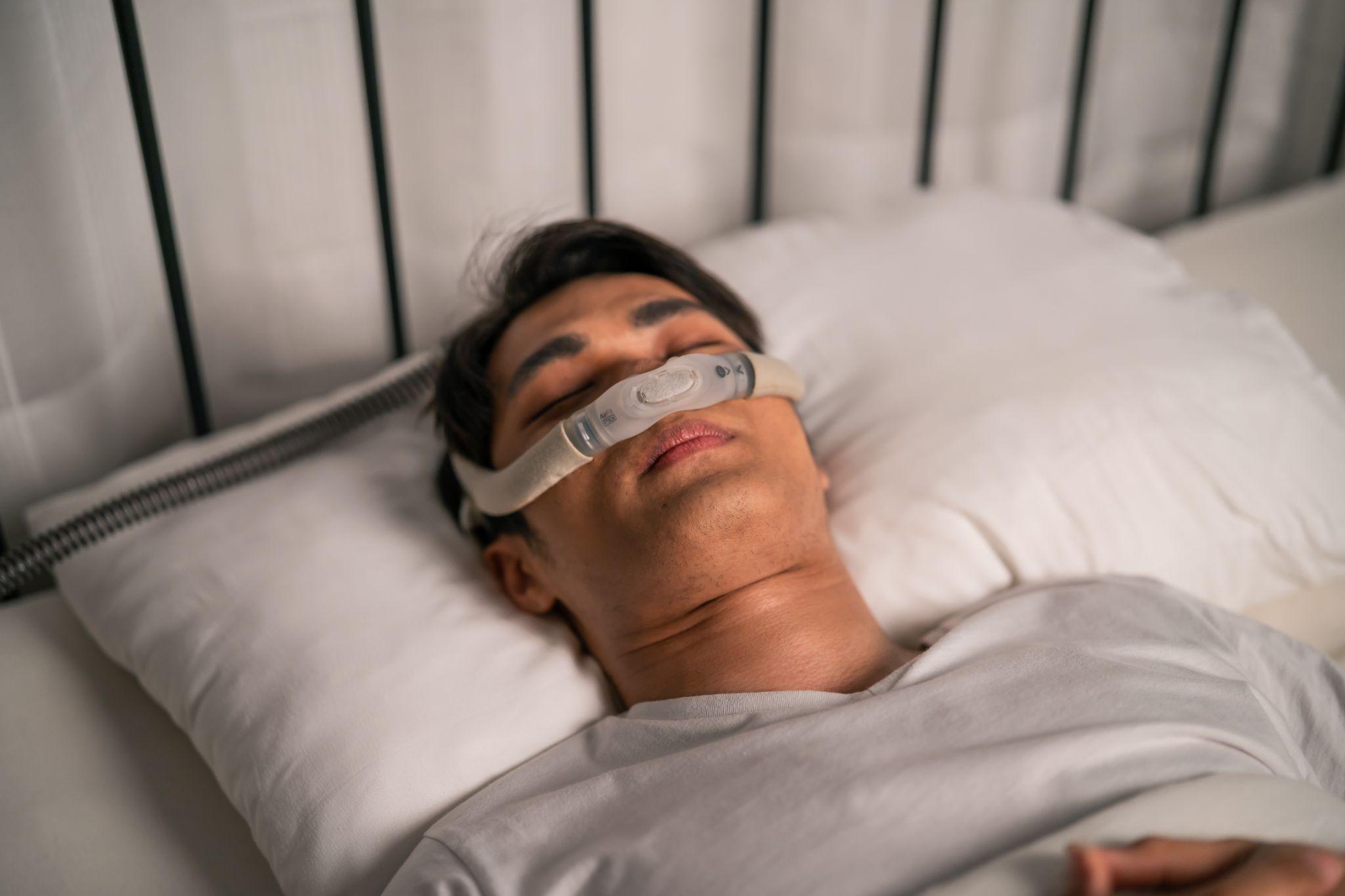
Conclusion: Achieve Optimal Sleep with CPAP Therapy
Choosing the right CPAP tubing and filters makes a significant difference in the quality and effectiveness of your sleep therapy. Prioritizing clean, well-maintained components ensures consistent airflow and reduces the risk of irritation or infection.
Regular care and timely replacement keep your equipment performing at its best, supporting your overall respiratory health. If you’re unsure about what tubing or filters suit your needs, reaching out to experts can provide the personalized guidance necessary for a comfortable and effective therapy experience. Contact us today for assistance.
Frequently Asked Questions
How often should I replace my CPAP tubing?
Replace CPAP tubing every 3 to 6 months, or sooner if you notice cracks, discoloration, or odors. Regular replacement ensures optimal airflow and prevents bacterial buildup.
Can I use tap water to clean my CPAP filters?
Yes, use warm tap water with mild, fragrance-free soap to clean reusable filters. Rinse thoroughly and allow complete drying before reinserting to prevent mold growth.
What’s the difference between heated and standard CPAP tubing?
Heated tubing contains an internal heating element that prevents condensation and delivers warm air. Standard tubing is simpler but may cause rainout or dry airways in humid climates.
Do I need special filters if I have allergies?
Yes, specialized allergy filters capture finer particles like pollen, pet dander, and mold spores. These filters provide enhanced protection for sensitive users beyond standard filtration.
How do I know if my CPAP tubing has a leak?
Listen for hissing sounds or notice reduced air pressure at your mask. Check connections and inspect tubing for visible cracks or holes that compromise airtight delivery.
When it comes to improving sleep quality and managing sleep apnea, CPAP tubing and filters play a crucial role. These components ensure your CPAP machine delivers clean and consistent airflow throughout the night. At MacPherson’s Medical Supply, we understand how important it is to maintain your equipment for optimal performance and comfort.

